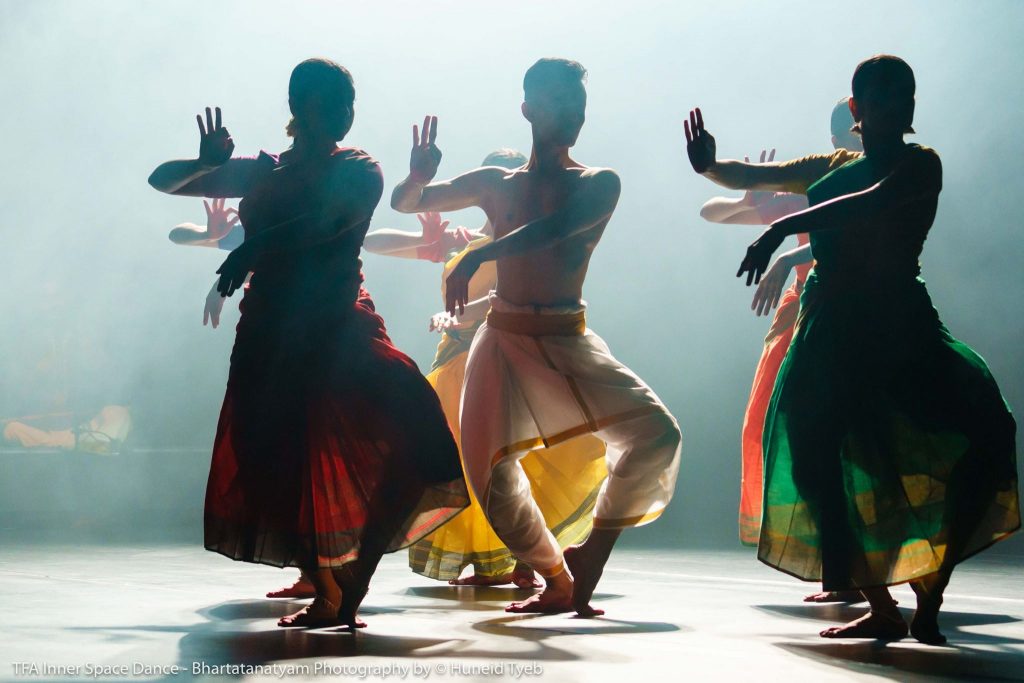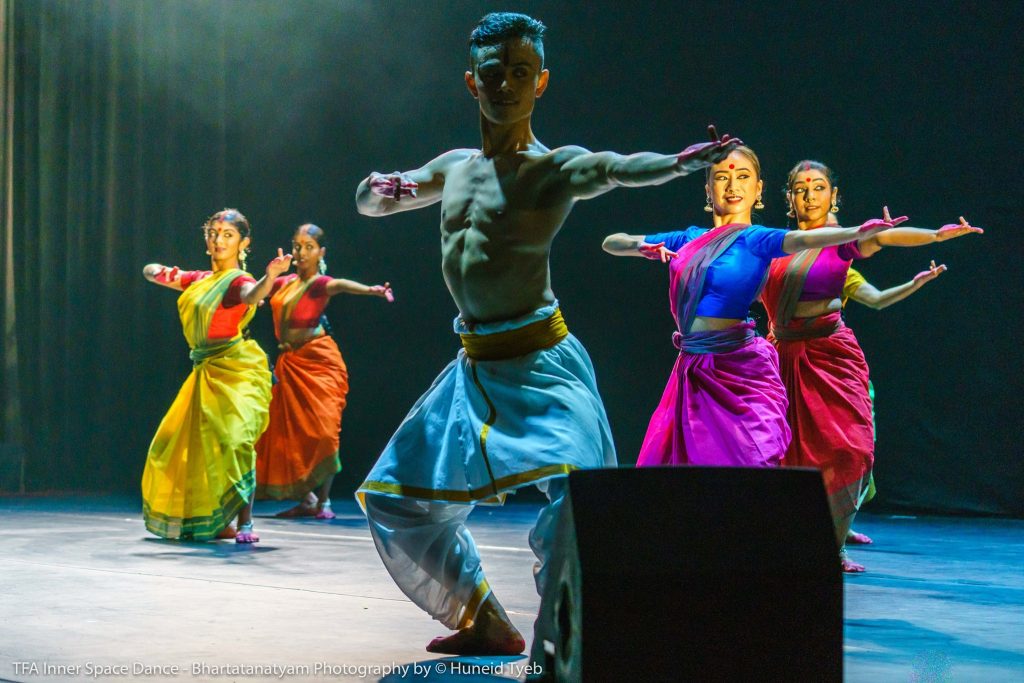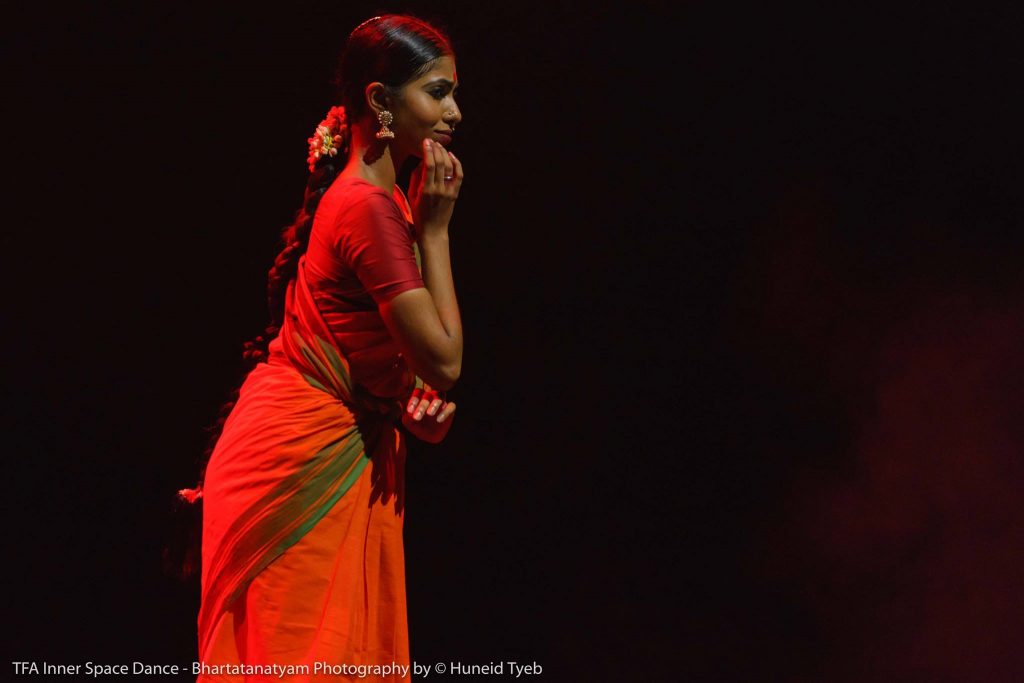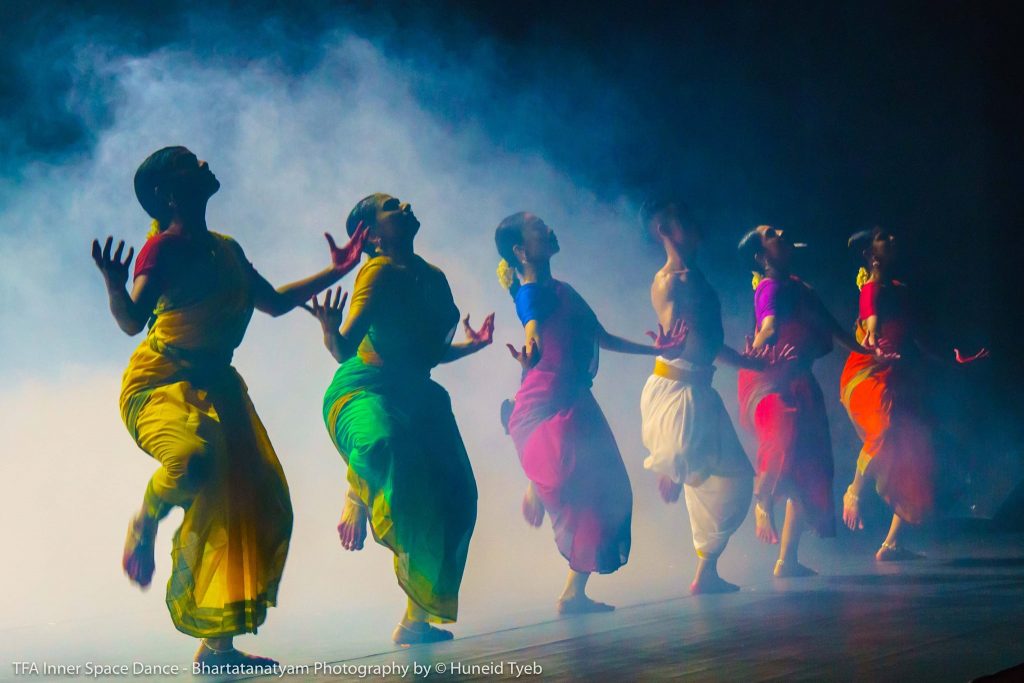- Views3757
- Likes0
Śiva: Love — Paradox — Ananda
Inner Space Dance Company
Choreographed by Mavin Khoo
Performed by TFA Inner Space Dance Company
Shantanand Auditorium, Temple of Fine Arts
19-20 August 2017
Review by Bilqis Hijjas
In the recent performance of Temple of Fine Arts’ Inner Space Dance Company, celebrated Malaysian-born UK-based choreographer Mavin Khoo restricted himself to playing the nattuvangam — the brass hand cymbals which keep time in bharatanatyam — and chanting the rhythmic accompaniment. As if to make up for not seeing him dance, Khoo’s choreography of the work provided the kind of audacious staging guaranteed to set the classical Indian dance connoisseurs a-flutter, even as the work’s thematic content hewed to a more conventional depiction of dancers as devotees in praise of Shiva.
In the first instance of rebellion, the work rejected the full elaborate costume characteristic of bharatanatyam. Clad only in cotton rehearsal saris — although in a rainbow of saturated shades, with Khairi Mokhtar, as the only male dancer, in universal white — the dancers wore almost no jewelry, not even the rhythm-enhancing ankle bells. The choreography also emphasized unexpected moments, drawing out the transitions as if they were as important as the meatier sections.
But the main challenge to the classicists was probably the lack of frontal lighting, which is usually intended to illuminate the dancers’ facial expressions. Lighting in conventional bharatanatyam shows also favours a rather frenetic colour palette, hustling through the spectrum to paint a moment of sadness in blue light, a moment of passion in red. Khoo’s production largely rejected this. The large group sections were lit by a bank of white lights on an sharp angle from upstage right, the cold clarity allowing the costumes to be seen in the colours they actually are. The expressive abhinaya solos settled for a slightly warmer tone, but only from the sides, or with uncompromising downlights from above.
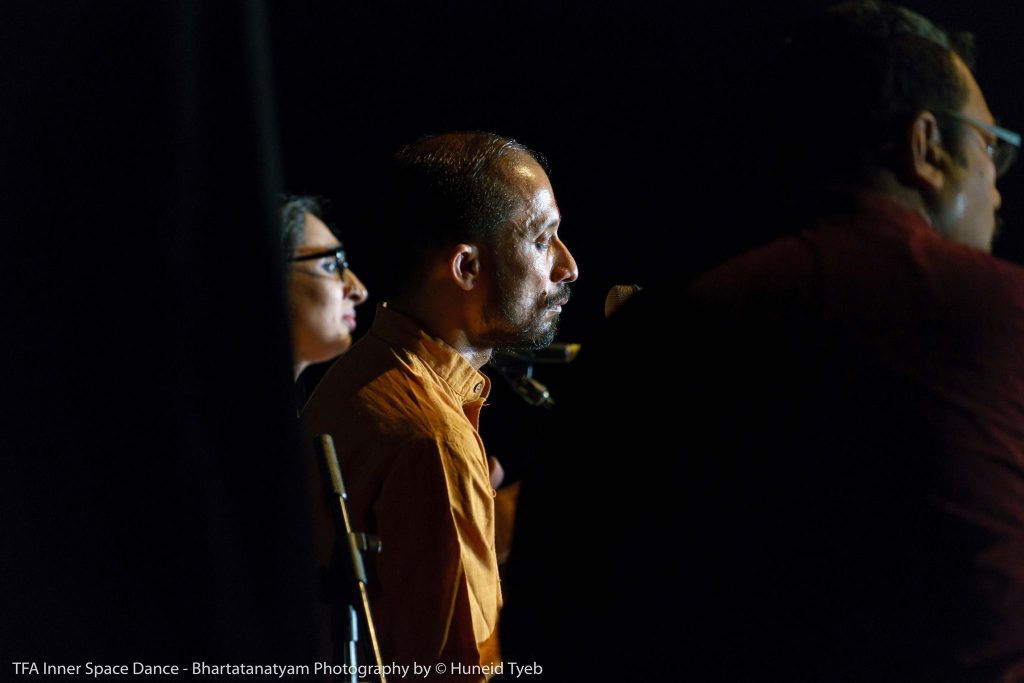
It’s tempting to read this approach as an adaptation to Western concert dance aesthetics, a desire to play down the “dumb show” of classical Indian dance, which Western dance critics find somewhat embarrassing, in favour of focusing on the body. But a certain lack of frontality extends throughout this work, penetrating all its dimensions. In the dancey nritta sections, the dancers often pivot to face all different directions, or stand in strange combinations, five dancers facing one way, and one dancer the other. This creates an impression of the body as a sculptural form to be appreciated from surprising angles, rather than as bharatanatyam is usually viewed in a proscenium theatre: flatly, from the front. It is an approach that perhaps borrows from American choreographer Merce Cunningham’s desire to reject the aesthetic dominance of the centre front, illustrating that there are no fixed points in space.
Cunningham’s interest in precise angles of the limbs, even when the body is rotated in space — parallel to the ground, an exact 45 degrees up, or 45 degrees down — finds a correspondence in bharatanatyam’s classical positions. Unsurprisingly, all the Inner Space dancers, uniform and meticulous as they are, are good at this; Khairi Mokhtar’s lines are nothing short of immaculate.
This rejection of frontality in favour of obliqueness extends into the expressive solo sections, approaching the object of desire at an angle, with many a sidelong glance. Hemavathi Sivanesan performs almost all of her first solo either in profile, facing into the wings, or facing downstage left. When she extends both arms up to her right, yearning diagonally into the skies above the audience — and holds this position several beats longer than a conventional dancer might, as if she has nothing else to do in her lifetime but this — there is a sudden blissful combination of écarté geometry and spiritual hunger.
In general, however, the show separates the secular physicality of the nritta from the spiritual feelings of the nrittya rather strictly; seldom the twain do meet. This effect is emphasized by having the abhinaya solos feature almost no physical choreography. Gone are the days of “You must do this facial expression on this beat.” The solos in this production are stripped down to their emotional basics, with few set steps. Even hand gestures are minimised. In a rather radical departure from tradition, Khoo actually encouraged the dancers to improvise their solos. A more Stanislavskian method is at play; you see the dancers delving within themselves for the emotion, rather than presenting emotion’s simulacrum. They stand or sit still for long periods of time, apparently doing nothing, but there is an impression of oceans of depth beneath the surface.
The show was already deep into its third or fourth solo when the impact of this approach occurred to me. The physical minimalism acts as a kind of palate cleanser, washing away the accumulated deposits of melodrama which have us demanding bigger, better, faster, more. It recalibrates our taste, encouraging us to appreciate subtler distinctions. So that when, at the end of Shonabushani Velusamy’s solo, after she seems to have spent an age enticing the god to come make love to her, there is a sudden crescendo of drums and she backs up, hands fluttering wildly in a circle, like a moth caught in a flame, it is as if the Godhead had suddenly appeared before her, and she is properly awestruck by the actuality of her wishes coming true. Because of the quietness of what preceeded it, I felt this moment as a real departure from normality. It is, in every sense of the word, a climax.
There is much pleasure, of a more cerebral kind, to be found in the clever rhythms of the nritta sections too. In the alarippu, a deliberate disjuncture between the pattern of the danced rhythm and the chanted rhythm, as if one were in 4 beats and the other in 6, created a shifting set of correspondences, windscreen wipers sweeping at different speeds. It reads in a similar way to unusual line breaks in poetry, as a way to upset expectations, opening up new but ambiguous dimensions. The Inner Space ensemble’s characteristic crispness was enhanced by these patterns — occasionally deceptively simple, even ponderous, then breaking into an unexpected flurry.
In the final mangalam section of benediction, even I experienced a moment of spiritual grace. The dancers stand in a line across the foot of the stage, deeply rooted, knees bent, arms and legs spread wide. They stamp from foot to foot, swaying to and fro, repetitively, seductively. Silhouetted against the white light streaming down from behind them, they are faceless devotees, as anonymous as a chain of paper dolls. After the slow build of the rest of the work, this unapologetically flat frontal expansive conclusion is full of power. Perhaps because I, too, am more comfortable with the secular aesthetics of contemporary dance, this moment affected me much more than the somewhat-forced piousness of more classical Indian dance.
All photos generously provided by Huneid Tyeb. See more photos from the performance here.
Bilqis Hijjas is the founding editor of Critics Republic. A producer, lecturer and community organizer in contemporary dance, she believes that the main purpose of criticism is to enhance the audience’s appreciation of art.
